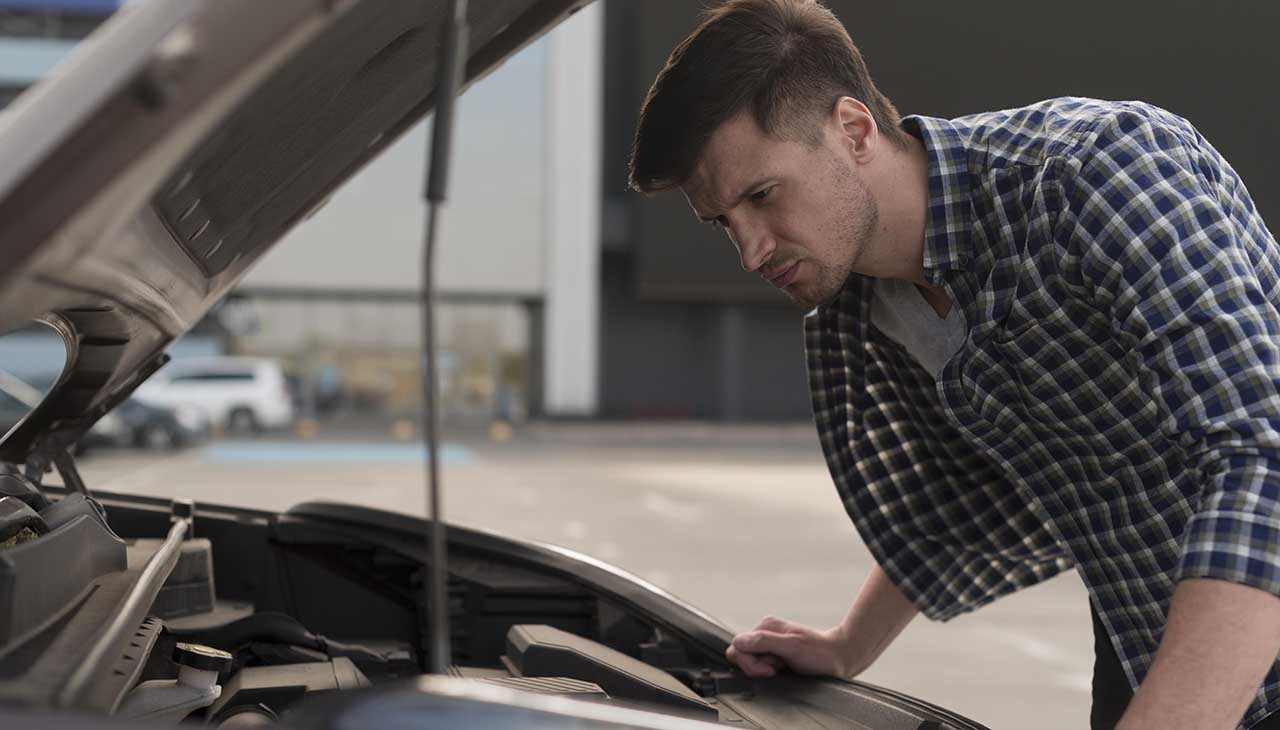Troubleshooting Common Vehicle Problems
5 min read
Navigating the complexities of vehicle maintenance can be daunting for many drivers. From unexpected breakdowns to peculiar noises and everything in between, the range of potential issues can seem endless. However, understanding some of the most common vehicle problems and their signs can empower vehicle owners to take proactive steps in maintenance, potentially saving time, money, and stress. This guide aims to demystify the troubleshooting process, offering clear, concise insights into identifying and addressing frequent challenges faced by drivers today.
Diagnostic Process
Gather Information
Start the diagnostic process by asking the driver to describe the issue in detail. It is crucial to note any unusual sounds (such as grinding or squeaking), odors (like burning rubber or gasoline), or dashboard warning lights that have come on. This information can provide vital clues as to what the problem might be.
Visual Inspection
The next step involves a thorough visual inspection of the vehicle. Look for any signs of leaks underneath the car, which could indicate a problem with the engine or transmission fluid. Inspect the tires for excessive or uneven wear and tear, as this could suggest alignment or suspension issues. Additionally, check for visible damage to the body, lights, or windshield that may need immediate attention.
Starting Issues
Check the Battery
One of the first steps in troubleshooting starting issues is to test the battery voltage using a multimeter. A reading of around 12.6 volts is considered healthy. Also, inspect the battery terminals for any signs of corrosion, which can interfere with the electrical connection. Clean any corrosion carefully with a wire brush and apply a layer of anti-corrosion gel if necessary.
Assess the Starter
Listen carefully for a clicking sound when you attempt to start the vehicle. This clicking noise can indicate a problem with the starter motor. It’s essential to check the starter’s connections to ensure they are secure and not damaged. Loose or corroded connections can prevent the starter from working correctly, leading to starting issues.
Engine Performance Problems
Poor Acceleration
Poor acceleration can often be traced back to issues with the vehicle’s air intake or fuel system. A clogged air filter restricts the flow of air into the engine, significantly reducing its efficiency and power. Regularly checking and replacing the air filter can prevent this issue. Similarly, a malfunctioning fuel pump or dirty fuel injectors can impede fuel delivery to the engine, leading to poor acceleration. It’s advisable to have these components inspected and cleaned or replaced as necessary to ensure optimal performance.
Stalling Concerns
Stalling can be particularly frustrating and may be indicative of several issues, with common culprits including worn spark plugs or faults within the ignition system. Spark plugs are essential for igniting the fuel-air mixture in the engine, and over time, they can become fouled or damaged. Regular inspection and replacement of spark plugs can help maintain engine performance. Additionally, any issues with the ignition system—such as faulty ignition coils or a failing ignition switch—should be addressed promptly to prevent stalling and ensure reliability.
Braking System Concerns
Squeaking or Grinding Noises
Squeaking or grinding noises when braking are clear indicators that the brake system needs attention. The first action should be to check the brake pads for wear. Brake pads equipped with wear indicators emit a high-pitched squeal when they are near the end of their service life. Additionally, inspect the brake discs for any signs of damage or excessive wear. Grooves or rough spots on the discs can lead to a grinding noise and reduced braking efficiency. Replacing worn brake pads and resurfacing or replacing damaged discs are crucial steps to eliminate these noises and maintain optimal braking performance.
Soft Brake Pedal Issues
A soft or spongy brake pedal is a sign of potential issues within the braking system, potentially compromising vehicle safety. One of the first checks should be the brake fluid levels. Low brake fluid can indicate a leak in the system or that the brake pads are significantly worn. Inspecting the brake lines for leaks is also essential, as even a small leak can lead to a loss of hydraulic pressure, resulting in a soft brake pedal. Addressing these issues promptly can restore the proper function of the braking system, ensuring the safety of the vehicle’s occupants.
Electrical System Malfunctions
Investigate Faulty Lights
Faulty lights, whether headlights, tail lights, or interior lighting, can compromise the safety and functionality of a vehicle. The first step in troubleshooting lighting issues is to check and replace any burnt-out bulbs. Bulbs can fail due to age, vibration, or defects, and replacing them is often a simple and cost-effective solution. If new bulbs do not resolve the problem, the next step is to inspect the fuses associated with the lighting circuit. A blown fuse can cut off power to the lights, and replacing it may restore functionality. However, if fuses continue to blow, this may indicate a deeper electrical issue that requires further investigation.
Address Electrical Shorts
Electrical shorts are a common cause of various electrical malfunctions in vehicles, including erratic light behavior or complete failure. Begin by checking the wiring for any exposed or frayed areas that could cause a short. The insulation around wires can degrade over time or be damaged by wear and tear, exposing the wires. This exposure can lead to shorts when the wires make unintended contact with the vehicle’s body or other wires. Inspect the battery connections for corrosion as well, as corroded terminals can cause poor electrical conductivity and contribute to electrical problems. Cleaning the terminals and ensuring a tight, clean connection can often resolve these issues. If the problem persists, professional diagnostic tools and expertise may be required to trace and fix the short circuit.
Transmission Problems
Diagnose Gear-Shifting Issues
Problems with gear shifting can significantly affect a vehicle’s performance and may indicate underlying transmission issues. A primary step in diagnosing gear-shifting problems is to check the transmission fluid levels. Proper fluid levels are crucial for the transmission’s operation, and low fluid can lead to shifting difficulties. Use the vehicle’s dipstick to check the fluid level and condition; if the fluid is low, add the recommended type of transmission fluid to reach the appropriate level. Additionally, inspect the transmission for any signs of leaks, which could be a source of the fluid loss.
Address Unusual Noises During Shifting
Unusual noises during gear shifting, such as grinding or clunking sounds, require immediate attention. One potential cause of these noises is damage to the transmission mount, which supports the transmission’s weight and helps minimize vibrations. Inspect the mount for any signs of wear or damage, and replace it if necessary to ensure proper support. Another area to inspect is the clutch (in manual transmission vehicles), as a worn clutch can lead to noise and difficulty in gear shifting. Check the clutch for wear and adjust or replace it as needed to restore smooth gear shifting.




